If you’ve ever wondered how to lubricate a handgun, then this article will show you how.
Seems simple right?
Squirt some lube in there and you’re good to go.
Now, here’s the thing …
With most handguns, you’d be correct. The fact is that it’s almost always better to over-lubricate than to under-lubricate.
But some handguns (like the Glock) require a very specific way of lubricating them.
There is a brilliant, amazing, super tactical two step process that I use to figure out the best way to lube my handguns (no matter the brand) … you ready?
Step 1: Read the owners manual.
Step 2: I use common sense.
Let’s cover both those right now …
Step 1: Read The Owners Manual (RTFM)
The first step, for your particular handgun, is to whip out the old owners manual that came in the same box that your handgun did when you bought it.
Bought your gun used?
No problem. Hop on the internet and type “XYZ GUN owners manual” (and of course replace “XYZ GUN” with the name of your gun) and you should find your gun’s owner manual in .pdf form in short order.
For example, here is what the Glock Owners Manual says about lubrication:
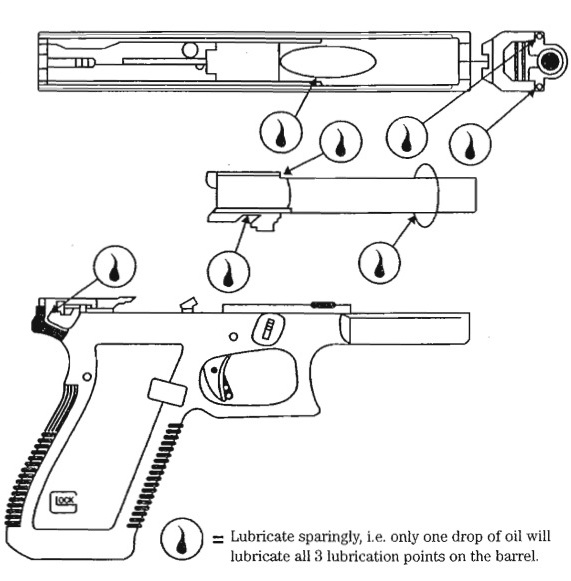
Step 2: Use Common Sense
After you field strip and inspect your weapon, look for “wear” points on the gun. This would be any points where you can see the metal-on-metal contact of the gun wore away the finish or scratched it up.
The whole idea of lubrication is to make the parts on your gun – typically metal on metal — that touch each other more slick.
In other words, you lube them so they don’t grind away and damage each other.
(The more you shoot your gun the better this works, because you’ll see more wear)
Makes sense right? If you see somewhere on your gun that could use a touch of lube, put it on there.
That’s about it. Now, here’s how I lube my Glock.
How I Lubricate A Glock Pistol
Step 1: Field Strip
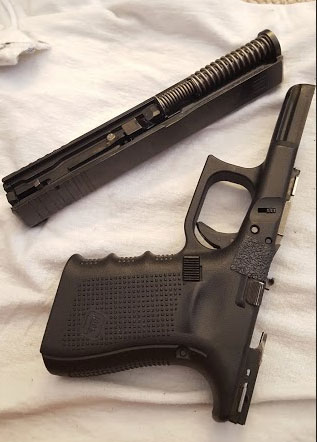
First thing you gotta do is field strip the Glock. That means take it down to the frame and slide. Easy Peasy.
Step 2: Grab your favorite “Magic Lube”
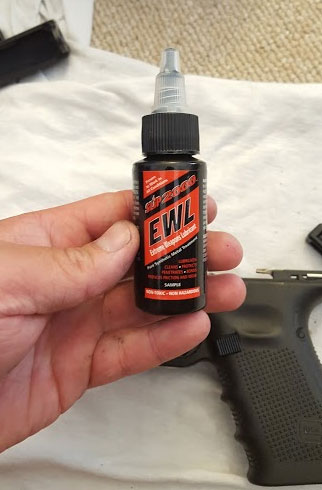
In all honesty, at this point in my life I do not prefer one lube over the other. I usually use a regular CLP, but I got this nifty sample bottle of EWL – Extreme Weapons Lube – from my buddy Chris who swears by it so I’m going to use it for a while.
The truth about lube is this: ANY lube is better than no lube. I would not feel at all unprepared if I had to use motor oil from my garage to lube any of my guns.
Step 3: Lube the most important part, the connector.
Put one drop (and only one drop) of oil on the connector. This is what the Glock manual says:
“Most important is the drop of oil where connector and trigger bar meet. If not properly lubricated, the connector and/or trigger bar may be damaged and produce a hard trigger pull, resulting in their needing to be replaced”
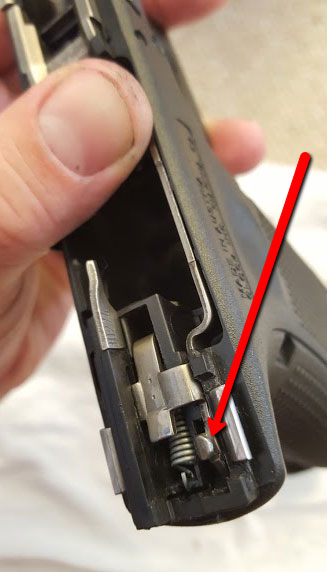
Again, just one drop on there will do. You don’t want to gunk up the trigger mechanism stuff.
Step 4: Take one drop (or excess lube) and slick up the metal rail contact points

I take either one drop … or … the lube that I have some how dripped all over my lube bottle some how, some way that I can’t figure out … in other words just the little bit that’s on my fingers … and I smear it all over the 4 contact points of the rail on the frame.
This step is not mentioned in the Glock owners manual as far as I know because when you lube the slide later it will get on these parts anyways. (It’s my super ninja Navy SEAL secret that makes my guns run so smooth — don’t tell!)
Step 5: Lubricate the Slide
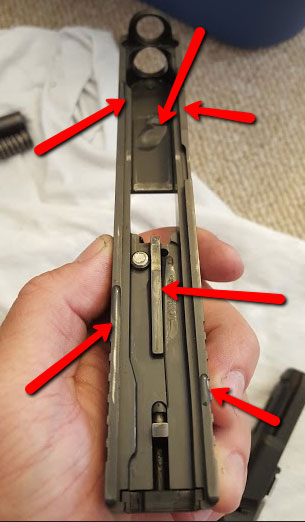
First, notice I point the BARREL end down towards the ground because this does two things. One, gravity will help the drops of lube on the slide rails move all the way down the rail. Two, it keeps any excess lube from dripping down into the striker pin channel and gunking up the firing of the gun.
There are basically three points on the slide that Glock says to lube up, that’s the 2 slide rails and the “hood” part where the barrel touches.
I also tried to put a SMALL amount of lube on the raised metail thing in the center (can’t remember the name) because now that it’s clean I can see it has a lot of wear marks on it. Be very careful not to get lube in the “weep hole” that’s right beside it though.
Step 5: Lube that Barrel
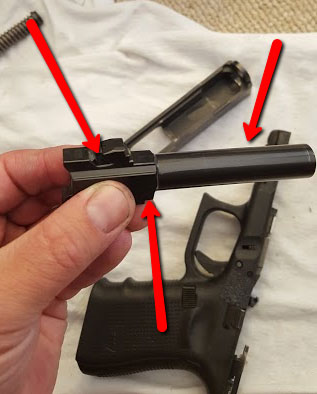
Very simply, one drop of oil on the barrel and spread it around with your fingers. Also dab a little inside the “U” shaped area and the other side. Again one drop of oil on the barrel and one drop on the “square part” stuff, spread amongst those two points is enough.
Step 6: Put Your Gun Back Together, Function Check and Enjoy.
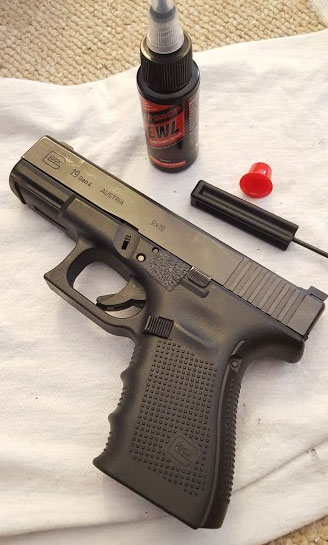
Simply reverse the field strip process to put your Gun back together.
Here is another infographic on lubing the Glock that the factory put on their facebook page.
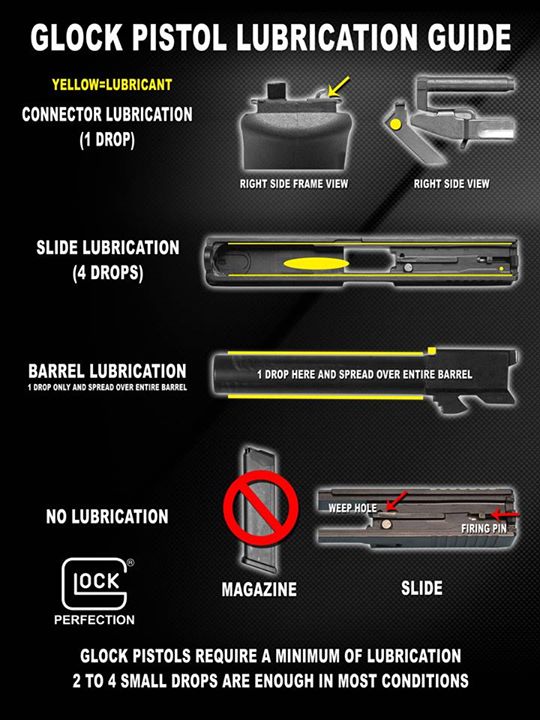
Lube Is Important, So Do It Often and Do It Right!
The truth is that most guns will run great clean and lubed. They also will run fine dirtyand lubed.
But almost no gun will run dry — for any appreciable amount of time — no matter if it’s clean or dirty.
Lube is super important so do it right and do it often.



![Case Study: Defensive Gun Use [Video] NSFW](/wp-content/uploads/2025/07/Depositphotos_282075792_S-218x150.jpg)






![What Level Holster Should You Be Using? [Video]](/wp-content/uploads/2024/04/Depositphotos_44548439_S-218x150.jpg)


![How Many Shots Will It Take? [Video]](/wp-content/uploads/2025/06/Depositphotos_2724272_S-218x150.jpg)















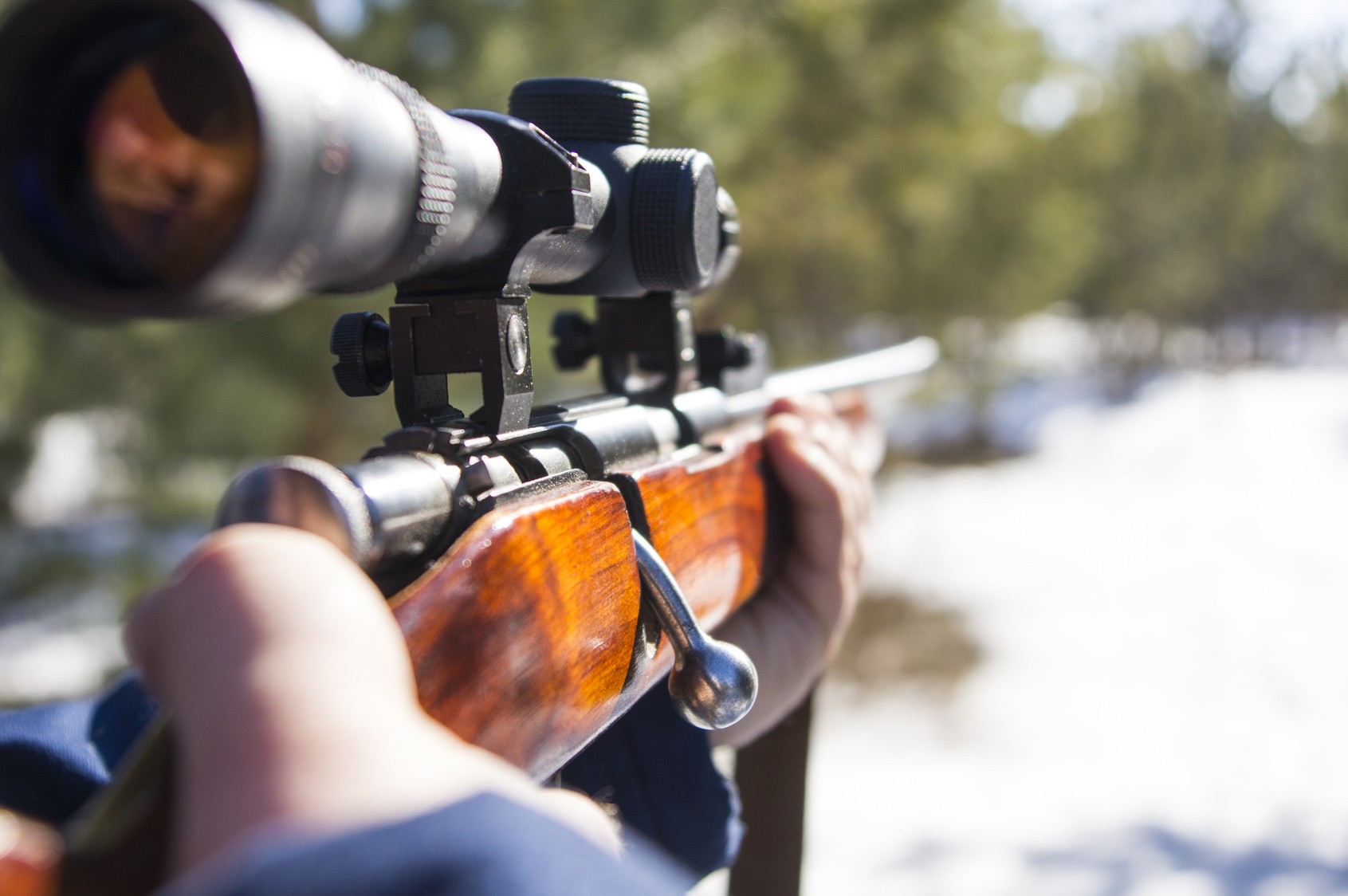





![Optic Ready vs Milled slides? [Video]](/wp-content/uploads/2024/02/image-3-100x70.png)
![[Checklist] What Gear You Need To Take Pistol, Rifle & Shotgun Training Courses [Video]](/wp-content/uploads/2023/07/Depositphotos_275087632_L-100x70.jpg)
![What is in Carter’s 2023 EDC? [Video]](/wp-content/uploads/2023/07/Depositphotos_146856137_L-100x70.jpg)



Very Nice, Complete Directions: Step 1: Read the owners manual. Step 2: I use common sense.
Hmmm, I wonder if that could be used anywhere else? I read my state driver’s manual every few years, and always find something I’d forgotten/disregarded. I can’t recall the last time I’ve bothered to re-read a SAFETY/Operation manual. I may not have ever read a 1911 manual. Thanks!
LOL, yeah.
It’s funny how many people will jump on the internet forums and debate something they could easily just RTFM (Read The Effing Manual)
Should be mentioned that you don’t want to lube the chamber on any gun. The expanding shell is designed to grip the chamber to spread the explosive power of the recoil. If you carry “cocked and locked” be sure to wipe the chamber before you load the first round.
“I thought the grease made the bullet come out faster.” {From the movie Sgt York, w/ Gary Cooper.} line said by “Pusher”
A very comprehensive and common sense article. But, how about us wheel gunners, of which I am one? Can you please pass on some tips on lubing a revolver? I typically have not been lubing my guns and probably should be so I’d like the know-how. Thanks for all you do for the gun owning public and gun rights.
I have a 38+clr. How do I lube it?
Before I Retired I went to a Basic Armorers Course.I was surprised as to the LITTLE lube a Glock needed, as well as many other firearms. In fact, with a Glock, just for grins, I tried this. With my totally dry Glock 9mm, I wiped the rails with a sweaty greasy finger. That was enough “lube” to get it to work in a warm climate. No, SWEAT is not a suggested lubricant, but in an emergency???? Some guns like Glock are made to operate with minimal lube. Just read some books on the M-1 Garand and in the Korean War M-1s were made to operate in below freezing with no lubricants. Eventually, you start getting high metal wear, but by then hopefully you had some Cold Weather Lubricant. Good article.
Thanks for the comment.
Yes, that’s true, designed to work with less lube … but … remember when the M16 came out and they told all the soldiers in Vietnam it didn’t need to be cleaned? What a disaster …
But yes, very little lube! Neat test you did.
I would like to ask that the webmaster for this site add the option to download all the tips in a PDF format so they could be downloaded and then accessed later without having to have internet access.
HOW DO YOU RECOMMEND THE BARREL BE CLEANED?
I simply use a boresnake.
“I thought the grease made the bullet come out faster” {Pusher in Sgt York w/ Gary Cooper}
Having read this I thought it was rather informative.
I appreciate you finding the time and energy to put this short article together.
I once again find myself personally spending way too much time
both reading and leaving comments. But so what, itt
was still worth it!
Comments are closed.